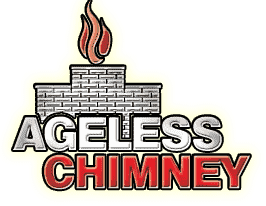Chimney Services in Hell's Kitchen, NY
What our clients say




Read About Us
Browse Fireplace Services
contact us
Cost-Effective Chimney Cleaning Services in Hell's Kitchen NY

Why Choose Our Chimney Cleaning Service
When it comes to chimney cleaning in Hell’s Kitchen, NY, Ageless Chimney is your trusted service provider. Our team of professionals is dedicated to ensuring your chimney is thoroughly cleaned and safe to use. We use the latest tools and techniques to deliver top-quality service, ensuring your home remains safe and your fireplace operates efficiently.
We pride ourselves on serving the New York City community with reliable, affordable chimney cleaning services. Our commitment to excellence and customer satisfaction sets us apart from the rest. Contact us at 516-795-1313 to schedule your appointment today and experience the difference with Ageless Chimney.
Experienced Technicians
Our team has years of experience providing top-quality chimney cleaning services in New York City.
Customer Satisfaction
We prioritize customer satisfaction and ensure every job is done to the highest standards.
Affordable Rates
Ageless Chimney offers competitive pricing without compromising quality. Call us at 516-795-1313 for a quote.

Our Comprehensive Chimney Cleaning Process
At Ageless Chimney, our chimney cleaning process is designed to ensure thoroughness and safety. We begin with a detailed inspection of your chimney in Hell’s Kitchen, NY. This inspection helps us identify potential issues, such as cracks, blockages, or buildup of creosote, which can be hazardous. Our experienced technicians use specialized tools and techniques to examine every part of your chimney, ensuring nothing is overlooked.
Once the inspection is complete, we proceed with the cleaning process. We meticulously remove soot, creosote, and any obstructions, such as bird nests or debris, using state-of-the-art equipment. Our cleaning methods are safe and efficient, minimizing any mess and disruption to your home. We understand the importance of maintaining a clean and safe environment and take every precaution to protect your property during the cleaning process.
After the cleaning, we conduct a final check to ensure your chimney is in optimal condition. We will provide you with a detailed report of our findings and any necessary maintenance or repair recommendations. Serving the New York City community, Ageless Chimney is committed to delivering top-quality service, ensuring your chimney operates safely and efficiently. Contact us at 516-795-1313 to schedule your chimney cleaning today.

Benefits of Regular Chimney Cleaning
Regular chimney cleaning is essential for maintaining your fireplace’s safety and efficiency. By choosing Ageless Chimney, you ensure that your chimney in Hell’s Kitchen, NY, remains free from hazardous build-ups that can lead to fires or carbon monoxide poisoning. A clean chimney allows for better airflow, reducing the risk of dangerous gasses entering your home.
In addition to safety, regular cleaning can also improve the performance of your fireplace. When your chimney is clean, your fireplace burns more efficiently, providing more heat and reducing energy costs. This is particularly important in New York City, where a well-maintained fireplace can make a significant difference during the colder months. Our team at Ageless Chimney is dedicated to helping you get the most out of your fireplace with our comprehensive cleaning services.
Moreover, regular chimney cleaning can extend the life of your chimney. Buildups of creosote and soot can cause corrosion and damage over time, leading to costly repairs. By keeping your chimney clean, you are protecting your investment and ensuring it serves your home for many years to come. Trust Ageless Chimney to provide the best chimney cleaning services in Hell’s Kitchen, NY. Call us at 516-795-1313 to learn more about our services and schedule your appointment.
Have a question?
Hell’s Kitchen, also known as Clinton, is a neighborhood on the West Side of Midtown Manhattan in New York City. It is considered to be bordered by 34th Street to the south, 59th Street to the north, Eighth Avenue to the east, and the Hudson River to the west.
Local Resources
Useful links for Hell’s Kitchen, NY
- Open a Hell’s Kitchen, NY map
- Find the Hell’s Kitchen, NY United States Post Office
- Locate nearby Hell’s Kitchen, NY pharmacies
- View the current Hell’s Kitchen, NY weather report
- Browse a list of Hell’s Kitchen, NY public and private schools
- Hell’s Kitchen, NY is located in New York county in New York State
